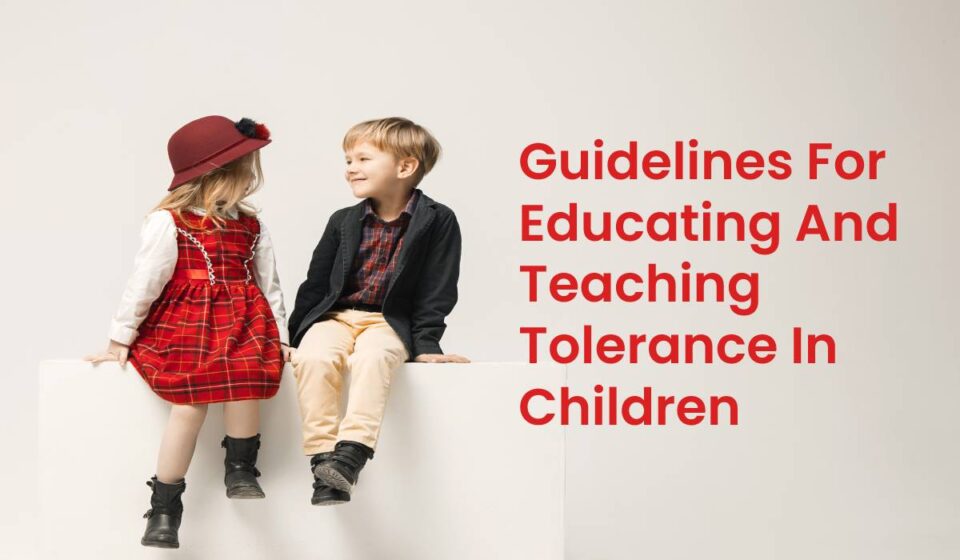Teaching Tolerance Children to be Tolerant
Although the conditions that can trigger intolerance exist in all people and societies, the conflicts generated by today’s world, characterized by globalization and the technological revolution, require a greater educational effort in the principles of mutual respect. That is why it is so important to Teaching Tolerance the value of tolerance from childhood.
Table of Contents.
Also Read: IMPORTANCE OF EATING ATOMIC HABITS FROM CHILDHOOD
Intolerance in Society
Intolerance is a complex phenomenon that influences what we think, feel, and behave. In other words, it includes three components around which education must be oriented: •
The cognitive component consists of a set of very simplistic and stereotyped beliefs about the characteristics of the people who are part of a group. •
The emotional component consists of a negative assessment of the other group, together with feelings of hostility and rejection towards the people who compose it. •
– The disposition to behave in a negative way with the members of another group (rejecting them, marginalizing them …).
Intolerance usually bases on a simplification of social reality. There are only two categories, without nuances or intermediate situations: good and evil, friends and enemies, those who belong to the own group and those who do not, absolute perfection or total imperfection.
Also Read: Nutrition Experts Praise The Health Benefits of Egg In Daily Life
Educating Children for Tolerance
Educating for tolerance is necessary to make a more just and supportive society and a question of intelligent selfishness, a requirement to improve the quality of life and teach how to build happiness through education.
Situations in which a high level of insecurity and uncertainty is felt, especially in relation to one’s own identity, can activate intolerance. The changes caused by globalization and the technological revolution produce a series of conflicts and tensions. And as an expression of which we should highlight, for example, some contradictions that we must teach to face:
- We have more information than ever, but it is more difficult to understand what is happening to us every day and predict what will happen.
- Also, have more technical resources to communicate, but the risk of isolation and social exclusion increases.
- We must interact in an increasingly multicultural and heterogeneous context, and we are exposed to strong homogenizing pressure.
- Mutual respect and human rights as the end and limit of tolerance.
Also Read: 10 Tips To Get Educate Children On Value Of Punctuality
Guidelines for educating children in Teaching Tolerance :
- You have to start educating for tolerance from early childhood, providing values and relationships based on empathy.
- To develop tolerance, it is necessary to teach from an early age to face uncertainty and conflict.
- It is impossible to adapt to today’s complex world from absolutism or black-white categories.
- The most tolerant people have learned to detect and correct intolerance through skills that need to be taught so that it can be understood.
- Quality opportunities always provide from childhood in heterogeneous contexts.
- We must promote construction of a differentiated and positive identity based on tolerance and human rights.
Also Read: Perseverance Meaning and Discipline Is Important In Children’s Education
Adolescence and intolerance
Studies carried out on racist and xenophobic violence during the 1990s show that the perpetrators were often adolescent boys between the ages of 15 and 20, who had dropped out of school or who had significant difficulties in this context.
In addition to the uncertainty and lack of a vital project of these adolescents, the following conditions tend to highlight that favor
The violence:
the contagion effect that the dissemination of violence by the media has among the individuals most vulnerable to such influence; and the weak responses provide by the rest of society in condemning violence, which these adolescents usually interpret as implicit support, such that, although in theory rejection of violence is in practice.
Results On Non-Teaching Tolerance
The results obtained in our research with high school students in world. Thus, reflect that adolescents who identify with intolerant and violent gangs. Also, differentiated from the rest of their classmates due to less developed moral reasoning (more absolutist and individualistic). Hence, justify violence and use it more frequently; get on badly with teachers. Hence, rejecting and by the other boys in the class. And also, perceiving as aggressive, with a strong need for prominence, immature. Thus, unfriendly and with difficulty understanding the weakness of others. Profile that reflects as possible causes of intolerance and violence. So, Its become difficulty in feeling accepting and recognizing by the school and the social system


